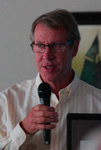Shellfish poaching is an expensive problem. In a two-hour tide, a poacher can make anywhere from $200 to $800 and sell their take at a reduced price, edging out legitimate businesses. Even worse, …
This item is available in full to subscribers.
We have recently launched a new and improved website. To continue reading, you will need to either log into your subscriber account, or purchase a new subscription.
If you had an active account on our previous website, then you have an account here. Simply reset your password to regain access to your account.
If you did not have an account on our previous website, but are a current print subscriber, click here to set up your website account.
Otherwise, click here to view your options for subscribing.
* Having trouble? Call our circulation department at 360-385-2900, or email our support.
Please log in to continue |
|


Shellfish poaching is an expensive problem. In a two-hour tide, a poacher can make anywhere from $200 to $800 and sell their take at a reduced price, edging out legitimate businesses. Even worse, Washington Department of Fish and Wildlife (WDFW) enforcement are in constant pursuit and they can't catch every offender.
This and other findings were shared with a group of about 30 people in a presentation by the WDFW's Rich Childers and Mike Cenci at the Jefferson County Chamber of Commerce member lunch meeting Monday, July 13.
The pair outlined the well-being of Puget Sound shellfish and how it seems to be in flux as recreational fishing is increasing, biotoxins are spreading farther south than ever before and poaching is prevalent and increasing.
“The incentive to poach is of course on the buying end,” said Cenci, the WDFW deputy chief of enforcement. “There is a propensity to buy illegal shellfish because it’s cheap. People like to have a good deal.”
Cenci estimated about 60,000 pounds of crab can go unreported by one vessel alone. Worse yet, geoduck poaching sees millions of pounds extracted illegally every year. Cenci said ever since China developed a taste for it around 2006, demand has skyrocketed and poaching has been there to match it.
In one case involving Richard Finch of G&R Quality Seafoods, an estimated $5 million in oysters and $200,000 in clams was stolen from Puget Sound. He is currently serving 66 months in prison and 17 other people connected to the case are on schedule to go to trial, Cenci said.
Cenci said cases of poaching – either on a large scale or smaller – are on the rise. Things like jurisdictional complexity, not enough law enforcement staff and more sophisticated poaching techniques all play a factor.
“We need some help from the Legislature,” Cenci said. “That’s the bottom line.”
He said people can help their efforts by reporting suspicious activity to WDFW.
SHELLFISH MANAGEMENT
In 1994, a federal district court reaffirmed a prior treaty agreement between Washington and native tribes that allotted tribes 50 percent of shellfish harvest.
As the shellfish manager for Puget Sound, Childers said navigating these agreements proved difficult at times, which no doubt contributes to how poachers are able to hide between jurisdictions.
“We have us – the Department of Fish and Wildlife – the Department of Natural Resources, Department of Health, State Parks and 14 treaty tribes,” Childers said. “Each one of those treaty tribes, they don’t come to the table as a collective, they come as individual governments.”
Childers outlined recreational harvest between the different shellfishes. As no surprise, crab is one of the most popular in the Puget Sound area, especially around Hood Canal where “on the Saturday when the [crabbing] season opens, there are 2,000 boats,” Childers said.
Childers said that last year 104,000 pounds of crab were extracted from Hood Canal over the four days recreational crabbing season was open. The quota is five crab per person, per day.
Tribes share the recreational quota with citizens. For Discovery Bay, the quota is 530,000 pounds, half of which goes to recreational harvest, the other half commercial. This means the public and tribes split 265,000 pounds – 132,5000 each.
Childers said tribes are allowed to fish for sustenance year round.
BIOTOXINS
According to Childers, closures in Puget Sound shellfish harvesting due to biotoxin levels are the worst he’s seen in years. Biotoxins are absorbed by shellfish as part of their filter feeding and are undetectable by smell or taste and can lead to sickness and even death. Algae and other organisms contribute to biotoxin levels in shellfish.
The Department of Health has a map of shellfish health status throughout Washington State. As of July 14, closures for all shellfish species blankets many parts of Puget Sound with areas in the southern part of Hood Canal being some of the worst.
“We’ve never had it this bad in Hood Canal before,” Childers said. “It’s pretty scary.”
He said WDFW is unsure why the biotoxin levels are so high, though it could have something to do with ocean acidity. According to an EPA study, as carbon dioxide levels in the atmosphere rise, ocean pH becomes more acidic meaning warmer climate could play a factor.
“Something is going on, that’s for sure,” Childers said. “There are more biotoxin closures now than ever before.”
He wasn't confident in giving a date of when overall levels of toxicity might improve.
To check out the shellfish health status map, go to 1.usa.gov/1QmdXoF.